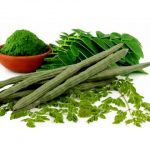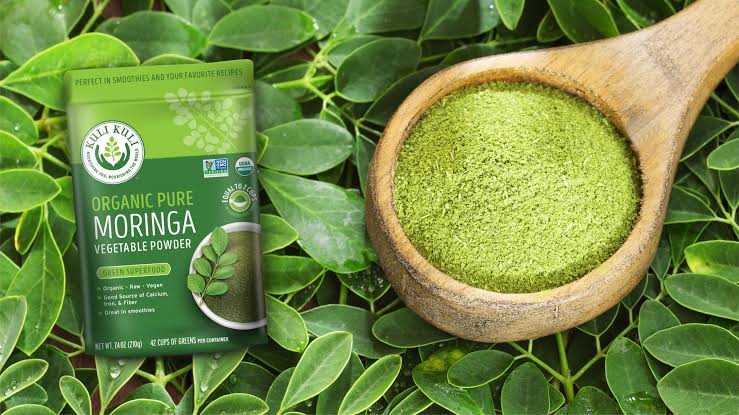Nutritional Value and Health Benefits of Moringa Leaf
I would like to draw your attention to the huge health effects of the consumption of Moringa oleifera or Drumstick tree or Ben oil tree (English). This plant has all the nutrients that are important in fighting not only communicable diseases, but also non-communicable chronic diseases, including stress.
This plant is at your backyards. Google for it and later search for it in your surroundings.. Here are details of the plant.
Moringa oleifera or horseradish tree, drumstick tree, ben oil tree, miracle tree, “Mother’s Best Friend” (English) or Zogale (Hausa) or Ekwe-Oyibi, odudu oyibo (Igbo) or Ewe-Iye (Yoruba): A magnificent multipurpose plant with enormous nutritional value and medicinal properties
The miracle tree plant has been consumed by humans throughout the century in diverse culinary ways. Almost all parts of the plant are used culturally for its nutritional value, purported medicinal properties and for taste and flavour as a vegetable and seed.
Moringa leaves can be eaten fresh, cooked, or stored as a dried powder for many months reportedly without any major loss of its nutritional value.
Nutritional Value and Health Benefits of Moringa Leaf
1. Moringa leaves are a good source of nutrition and exhibit anti-tumor, anti-inflammatory, anti-ulcer, anti-atherosclerotic and anti-convulsant activities.
2. Moringa leaves, seeds, flowers, pods (fruit), bark and roots are all seen as a vegetable and each part is uniquely harvested and utilized. For example, fresh leaves are picked, shade dried, ground to a powder, and then stored for later as a food flavouring or additive.
3. Dried or fresh leaves are also used in foods such as soups and porridges, curry gravy and in noodles, rice or wheat.

Credit: Seed gallery
4. Farmers have added the leaves to animal feed to maintain a healthy livestock while utilizing the manure and vegetable compost for crop growth.
5. Newer applications include the use of Moringa powder as a fish food in aquacultural systems and the Moringa leaves as a protein supplement for animals, such as cows.
6. With the leaves being rich in nutrients, pregnant women and lactating mothers use the powdered leaves to enhance their child’s or children’s nourishment, especially in underdeveloped countries suffering from malnutrition.
7. Moringa seeds contain much of the plant’s edible oil which is used in some countries as a cooking oil for frying and as a salad oil for dressing.
8. Moringa seeds contain 68-70% oleic acid. For a reminder, this fatty acid is the main component of olive oil, which is highly recommended by health professionals for the prevention and management of cardiovascular disorders (heart diseases, hypertension, stroke and atherosclerosis).
Other prominent fatty acids in Moringa oil include palmitic (~7%), stearic (~7%). It is worth mentioning that although stearic acid belongs to the class of saturated fatty acids, it DOES NOT increase the level of cholesterol in the body.
Moringa oil utilized as a frying oil can be a healthy alternative to other commonly used oils such as palm, canola and soybean oil when comparing fatty acid composition.
As mentioned earlier, oils with high amounts of monounsaturated fatty acids (among others, oleic acid) are desirable due to an association with decreased risk of coronary heart disease.
8. The whole Moringa seeds can also be eaten green, roasted or powdered, and steamed in tea and curries. The pods and seeds, often referred to as Moringa kernels, have a taste that ranges from sweet to bitter and are most popularly consumed after frying to get a peanut-like taste.
9. Mroinga leaves are a very rich source of nutrients and contain the essential vitamins C and E as well as provitamin A. Moringa leaves have been shown to contain as much provitamin A as a carrot, vitamin C as an orange and vitamin E as a pomegranate.
10. Leaves rich in biologically active carotenoids, tocopherols (vitamin E) and vitamin C have health-promoting potential in maintaining a balanced diet and preventing free-radical damage that can initiate many illnesses.
While the provitamins cannot be identified in the leaves, they can be monitored after conversion to their respective vitamins within the body.
Edible Moringa leaves contain essential provitamins, including ascorbic acid (vitamin C), carotenoids and tocopherols (vitamin E).
Epidemiological data have demonstrated that vegetables and fruits rich in carotenoids are related to a lower risk of cancer, cardiovascular disease, eye diseases, such as age-related macular degeneration (damage of the eye retina) and the formation of cataracts (damage to the protein of the retina of the eye).
11. Moringa leaves were used in traditional remedies for tumors (cancer) and extensively used as a natural sleep aid, applied as a poultice to sores, rubbed on temples for headaches, and as a purgative cleanser.
12. As a good source of flavonoids, Moringa leaves are an excellent candidate for the production of nutritional and pharmaceutical supplements.
A high intake of flavonoids has been linked with a reduced risk of cardiovascular disease, osteoporosis and other age-related degenerative diseases.
Experts of the World Health Organization (WHO) have been studying the use of Moringa for many decades as a low cost supplement enhancer in the poorest countries around our globe.
WHO has been promoting the use of Moringa plant to help those countries suffering from malnutrition, which is one of the major causes of death worldwide, especially in developing countries.
MORINGA RECIPES
In northern Nigeria, Moringa salad is prepared as a rich delicacy among the people. Some of the ingredients used in the preparation include: Moringa leaves, KULIKULI, (groundnut cake) or peanuts, pepper (green or red, cleaned and cut into chunks – optional), salt, seasoning spices, tomatoes, onions, and finely grounded ginger or garlic (optional).
There are some basic steps observed during the preparation of Moringa salad: first, the Moringa leaves are plucked from the tree and also detached neatly from the stems.
Then the leaves are washed with cool water and salt for 2 minutes. The washed leaves are poured into boiling water for at least one hour. Thereafter, the leaves are sieved from the hot water. Some amount of cool water is poured on the Moringa leaves to reduce the bitterness, then squeezed to ensure water is not retained, then allowed to dry for 5 minutes.
Next, the groundnut cake or peanuts are glibly pounded in a mortar using a pestle into a fine powder. A rolling pin or a food processor may be used to achieve this. In the process of pounding, seasoning spices, salt, ginger or garlic are applied. The Moringa leaves are finely mix with the pulverised groundnut cake or peanuts and salt added to taste.
Slice onions, tomatoes and pepper are mixed into the Moringa and stirred until all the leaves are completely coated with the condiments. The salad can now be served, ready for eating.
In SENEGAL, traditional Moringa leaf sauce is called Mboum. It is a very popular delicacy among the Senegalese people, which is eaten over rice or couscous.
In preparing the Moringa leaf sauce Mboum, some of the ingredients that are used include smoked or dried fish, beef or chicken; peanut butter, vegetable, olive, canola or palm oil, onion, salt and pepper. The peanut butter is added to water and allowed to boil. As the water boils, fish, beef or chicken is added and allowed to heat for twenty minutes.
Oil and chopped onion are added and allowed to simmer for another twenty minutes. Salt and pepper are added to taste. When prepared, the Moringa leaf sauce or Mboum is eaten with rice or couscous. Enjoy your Moringa meals!
Moringa is not safe in pregnancy.
These are the thoughts of:
Sa’eed Halilu Bawa
Senior Lecturer (Associate Professor) at University of the West Indies, St. Augustine Campus, Trinidad.
Studied Food and Nutrition Sciences, Dietetics at Kaduna Polytechnic, Nigeria; Warsaw University of Life Sciences, Poland.
























